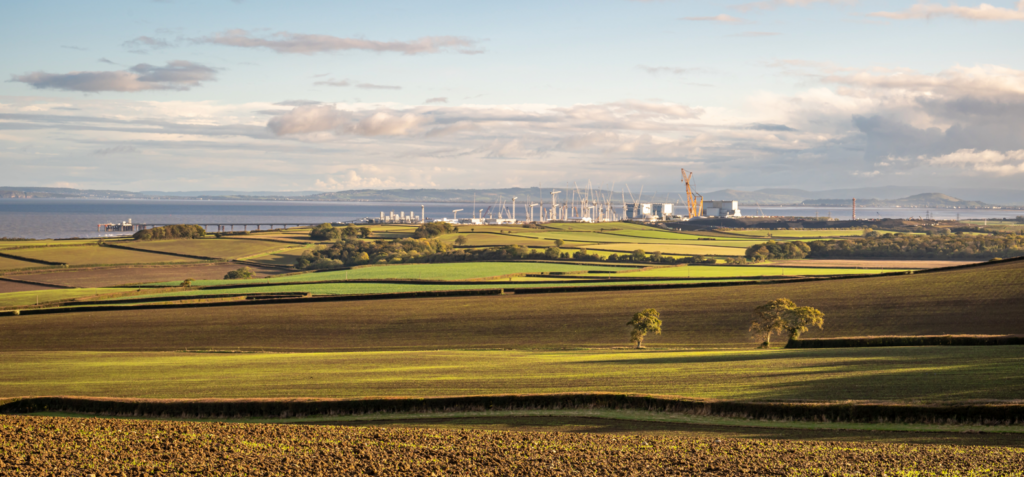Electrification and the grid-scale challenge
With projected electricity demand increasing by 2.5 times between today and 2050 (IEA, “Net Zero by 2050 – A Roadmap for the Global Energy Sector”), as electrification grows and living standards rise, a rapid expansion of fossil-free power generation is needed. Direct electrification is widely accepted as a primary lever of decarbonisation, in most cases being the lowest-cost and easiest-to-implement solution. Direct electrification also significantly reduces the world’s primary energy requirement, as the inherently inefficient combustion of fossil fuels produces mostly waste heat, with only around a third of the primary energy reaching the end-use.
So, more electrification means a requirement for more plants capable of putting zero-emission electricity onto the grid, and in recent years there has been a resurgence of interest in the use of nuclear power to meet these demands.
The costs of solar and wind (https://www.3ds.com/sustainability/energy-use/sustainable-wind-turbines) have fallen significantly over the last decades, driven by improvements in solar and wind technologies, standardisation and economies of scale in manufacturing. In combination with their modular nature, the construction of wind and solar farms is therefore comparatively low risk and low cost. These factors mean these renewables will globally provide the largest portion of low-carbon electricity supply. However, renewables-dominated grids bring challenges of their own, primarily their intermittency of supply requires significant short and long-term energy storage (for example, to mitigate the “dunkelflaute” (the “dark doldrums”), in which little energy can be generated due to low wind and sunlight over an extended period). Alongside storage, intermittency can be counteracted by significant overbuilding of generation capacity combined with building large (continent-scale) interconnected grids, able to move electricity from where it is being generated to where it is being demanded. These measures bring additional costs which must be factored into the choices made at the energy system scale.
The need for new nuclear
By using ‘always-on’ nuclear power to supply a significant portion of a nation’s electricity generation, the stability and balancing challenges induced by renewables-dominated grids are made more manageable. Recent Nuclear Energy Agency analysis (NEA no. 7628) finds that meeting the average of the International Panel on Climate Change pathways consistent with a 1.5°C scenario will require tripling global installed nuclear capacity by 2050.
Of the currently installed nuclear fission capacity, significant proportions are ageing assets reaching the end of their current life (https://discover.3ds.com/digitising-the-nuclear-decommissioning-journey). Plant life extensions are being pursued where possible, but the widespread construction of new nuclear plants will be essential if nuclear power, as a clean and steady source of energy, is to play the major role required in reaching net zero.
In addition to nuclear fission, work on nuclear fusion is accelerating, with recent breakthroughs by research organisations and an increasing number of private companies. Due to the ongoing technical challenges and most publicly communicated timescales for commercial demonstration plants, fusion is not currently expected to play a significant role in decarbonisation during the next 30 years. In the longer term, nuclear fusion may well play a significant role, reflecting the current investments being made in fusion development.

The challenges of nuclear construction
The construction of new nuclear power plants has some well-documented challenges. As major infrastructure projects, the cost and time of nuclear power plant construction have been a barrier to the increased adoption of nuclear power. Nuclear power plants are expensive to build, and the construction process can take many years, due to their highly complex and safety-critical nature. Speeding up construction will allow nuclear power to be more affordable and play a greater role in decarbonising the electricity supply sooner.
There are several ways to mitigate the challenges associated with the cost and construction time of nuclear power plants. One approach is to use standardised designs and build multiple instances under a coordinated national strategy (similar to that employed by the French government, following the energy crises of the 1970s, rapidly expanding the country’s nuclear power capacity, using Westinghouse technology). Standardised designs can reduce the cost of construction by reducing the need for custom engineering and manufacturing, establishing supply chains, and re-using the skills base established by the first-of-a-kind.
Another approach to improve construction time is to use modular construction, one of the principal benefits of Small Modular Reactors (https://www.3ds.com/sustainability/energy-use/small-modular-reactors). Modular construction involves fabricating major sub-assemblies in a factory, and then transporting these repeatable modules to the construction site for final assembly, reducing site construction risks.

Adoption of the 3DEXPERIENCE platform to overcome difficulties in nuclear construction
An additional and complementary way to enable improvements in construction is to ensure the use of a connected data set, utilising the insights afforded by the digital thread.
The plant lifecycle can be viewed as a series of connected decisions; the ability to make effective decisions is therefore critical to the successful delivery of a plant from concept through to decommissioning. Dassault Systèmes believes effective decisions need to be informed, traceable, timely, and communicated. Data-centric methods such as PLM and BIM Level 3 can play a significant role in effective decisions taken in the Manufacturing & Construction phase of a project.
While the 3DEXPERIENCE platform provides solutions that can support the whole lifecycle, from pre-concept design through to decommissioning, this Dassault Systèmes eBook (https://discover.3ds.com/enabling-successful-nuclear-construction) focuses on the manufacturing and construction phase, and four areas where Dassault Systèmes solutions support the transformation of people, business models and products through effective decision intelligence:
- Design Coordination: achieving an effective design by applying discipline expertise to an up-to-date common reference.
- Supply Chain Integration: maintaining the construction pace with timely access to assets and their quality records.
- Construction Management: building a productive site by putting the right equipment and people in the right place at the right time.
- Site Connection: providing site access to the latest information and live feedback to support construction management.
By utilising the fully connected management of key information on the 3DEXPERIENCE platform, nuclear construction projects can be de-risked, and ultimately delivered on time and budget, maximising the contribution of nuclear to decarbonising our world.

